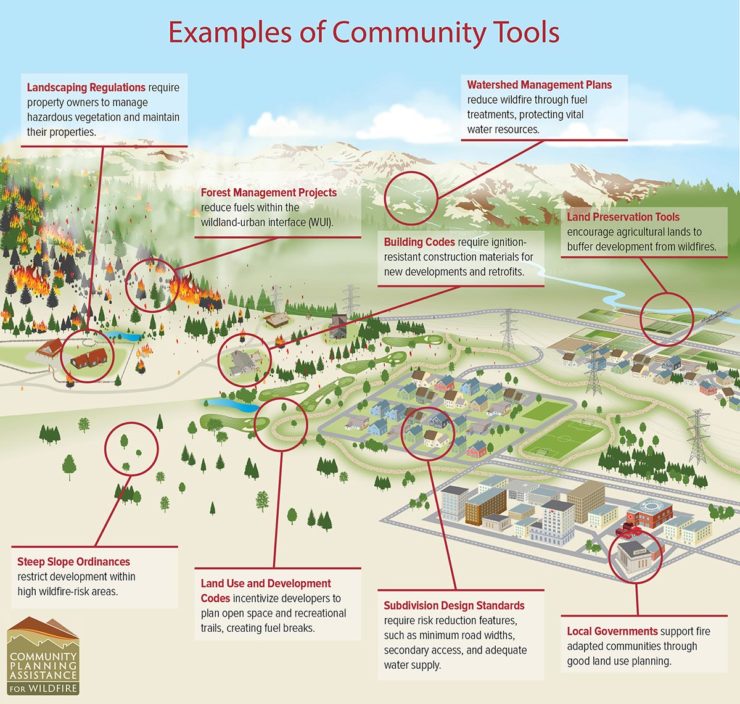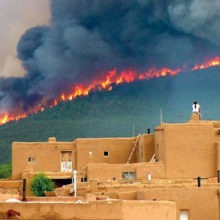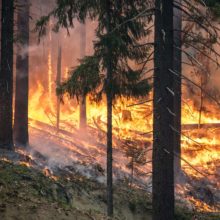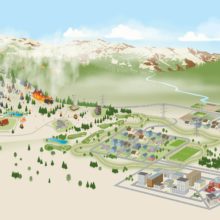- Montana wildfires are getting bigger, lasting longer, and causing more damage to homes and property. Improved land use planning tools and strategies can reduce risk in the wildland-urban interface.
- Communities in Montana can learn from each other’s land use planning strategies, and from approaches in other states.
- The Montana Legislature and counties should collaborate to reduce wildfire risk by expanding the tools available and increasing local flexibility.
Across Montana—like most of the West—wildfires are getting bigger, lasting longer, and causing more damage to homes and property, as the severity of the 2017 wildfire season demonstrated. This trend can only be expected to continue under a warmer, drier climate and as more homes are built in at-risk locations (known as the wildland-urban interface, or WUI).
Land use planning is an important tool to reducing risk, but few Montana counties have fully integrated wildfire into their land use planning programs.
Strategies Available to Montana Communities
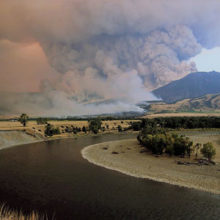 Under Montana law, four general approaches are possible. Table 1, found in both the full report and the summary, summarizes the role of each in helping manage development in the WUI. While every Montana jurisdiction must make its own determinations of how (and whether) to proactively address development in the WUI, protecting lives and property requires proactive, thoughtful integration of all four approaches, including:
Under Montana law, four general approaches are possible. Table 1, found in both the full report and the summary, summarizes the role of each in helping manage development in the WUI. While every Montana jurisdiction must make its own determinations of how (and whether) to proactively address development in the WUI, protecting lives and property requires proactive, thoughtful integration of all four approaches, including:
• Plans such as growth policies and neighborhood plans;
• Land use regulations including subdivision regulations, zoning, building codes;
• Revenue-generating strategies such as impact fees and rural improvement districts; and
• Voluntary measures including education, outreach, and incentives.
Montana also can learn from planning tools and strategies being adopted by other states in the West, such as giving counties the discretion to develop WUI codes, developing statewide risk mapping, and incentivizing regulations through funding strategies. Arizona, Colorado, and Utah have all adopted regulations that provide local governments with more authority and flexibility to manage land in the WUI.
Local jurisdictions in Wyoming, Idaho, Colorado, Arizona, and other states have also taken proactive steps such as developing WUI codes, building codes, steep slope ordinances, landscaping plans, and risk assessments.
Challenges with Montana’s Planning Framework
Montana struggles with unnecessarily complex and confusing statutes and administrative rules for addressing development in the WUI. Artificial distinctions and overlap between subdivision regulations, zoning ordinances, and building codes can create challenges for local governments in creating and enforcing measures to protect life and property.
One of the main challenges with Montana’s planning framework is the artificial distinction and overlap between what subdivision regulations, zoning ordinances, and building codes can address by statute and administrative rule. For example:
• Subdivision regulations can address the initial division of land, but can also include ongoing construction requirements and mitigation measures;
• Zoning regulations can address lot development, including vegetation maintenance over time; and
• Building codes address the design and construction of structures, but may also include the International Wildland-Urban Interface Code that addresses vegetation and other site conditions.
This framework is unnecessarily confusing, legally hazardous for local governments, and fails to consider the multi-faceted or holistic nature of addressing WUI development.
Ideally the Montana Legislature would grant wider-ranging legal authority to counties to address WUI development as is done in other Rocky Mountain states where counties have broader authority to address WUI development and fire safety issues. That would allow local governments to address WUI development in light of local circumstances.
Another option is for the Montana Legislature to permit local governments to include fire-protection-related building codes within county zoning statutes so structural fire protection issues don’t have to be addressed through subdivision regulations and covenants where building codes are not in effect.
The Legislature, however, has historically been reluctant to provide local governments with innovative options or tools to address land development issues, presumably because of distrust of government regulation. One hopes it will not take a disaster to alert our elected officials to the need for counties to develop a simpler and more comprehensive approach to addressing WUI development.
Planning Tools & Strategies Conclusion
With less development in the WUI than some neighboring states but enormous potential for future development, Montana has a rare opportunity to get ahead of growth before disaster strikes, and proactively apply land use planning tools and strategies to manage development in fire-prone landscapes. Cooperation and collaboration between the Legislature and counties could broaden the tools available and clarify ambiguities in current law to reduce wildfire risk in Montana.
This report was made possible through the generous funding of the LOR Foundation and the U.S. Forest Service. It was researched and written by Dave DeGrandpre, AICP of Land Solutions, LLC, with additional support from Headwaters Economics.
